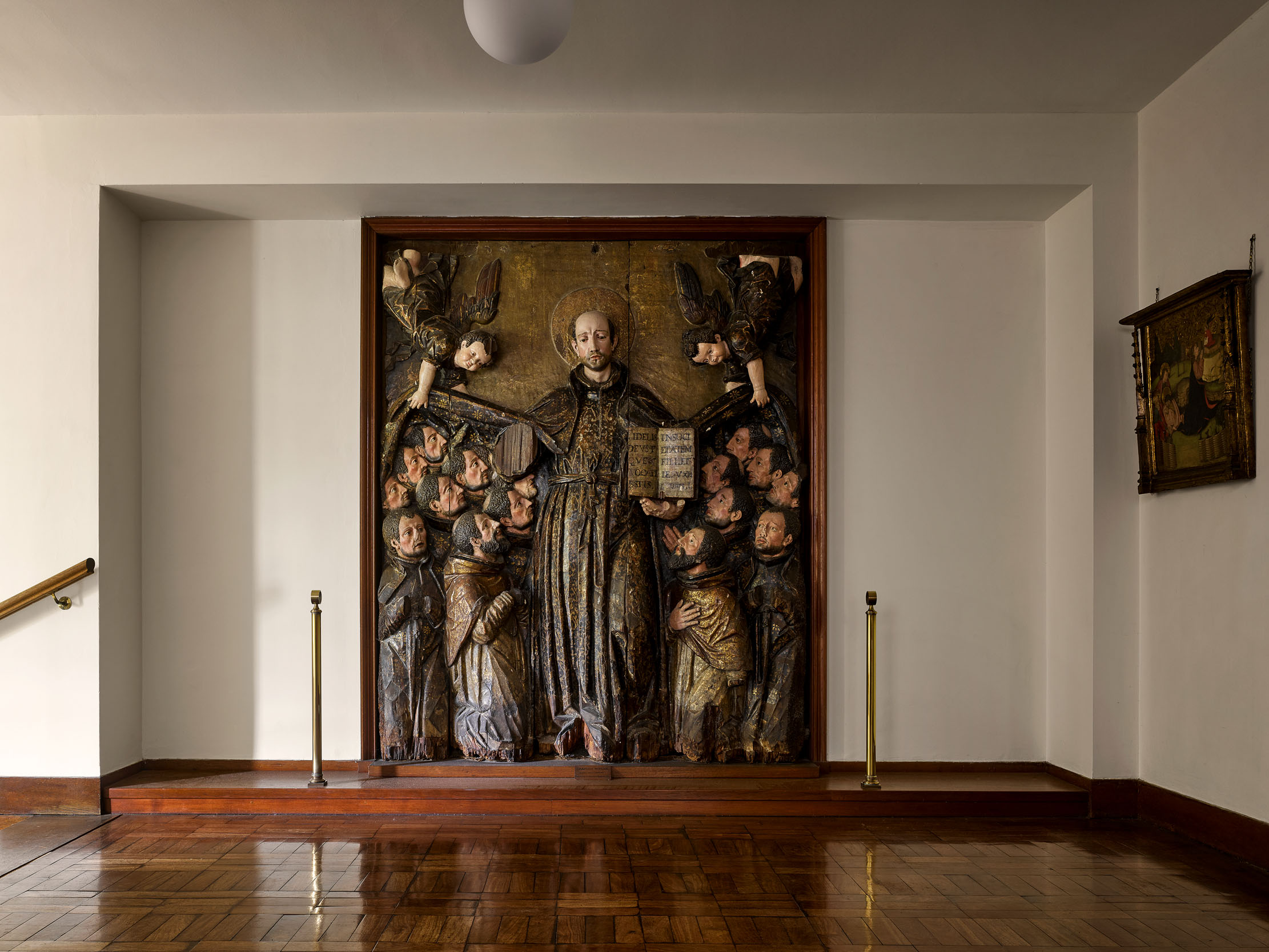'One of the wonders of Oxford': A look at the extraordinary Campion Hall
In the second of two articles, Clive Aslet looks at the furnishing of Campion Hall, particularly the treatment of the chapel, one of the city’s outstanding interiors. Photographs by Will Pryce.
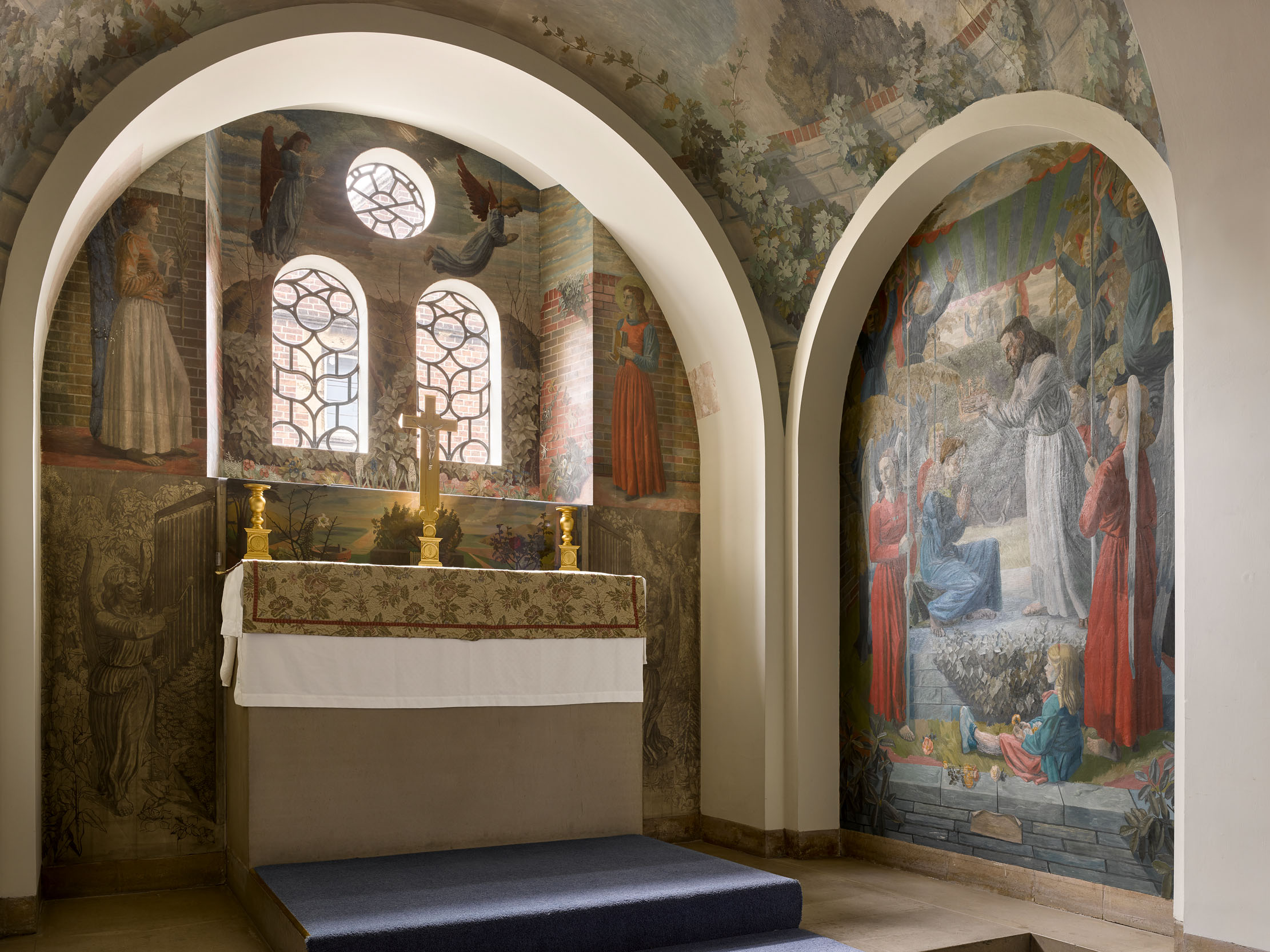
What the mondain Jesuit Father Martin D’Arcy called his Treasure Hunt began in the early 1930s. On becoming Master of Campion Hall, centre of Jesuit life in Oxford, he remembered being told by Lady Lovat, with whom he’d been staying in Scotland, that an extraordinary object was about to come onto the market. Due to (relative) poverty, Prince Rupert of Bavaria, the last heir apparent to the Bavarian throne, was selling the travelling altar that had belonged to Mary, Queen of Scots. D’Arcy bought it, probably at a good price, for the private hall — effectively a college — that Lutyens built for him in 1934–36. It would be the first of many works of art and pieces of historical interest that would adorn the building. D’Arcy’s budget may have been modest, but his charm and powers of persuasion went far.
There would be early Renaissance chasubles bought from an Italian refugee, chalices secured with the help of an Armenian Jew and gorgeous cloth-of-gold robes from China decorated with dragons and birds — a nun seamstress transformed them into a chasuble by slitting the armpits and adding ‘a small gold cross at the back’. By the end of the 1970s, the vestment collection extended from medieval pieces to the work of Dior.
Some treasures were modern — drawings by Henry Moore and Ben Nicholson, Rouault and Picasso. Laurence Whistler scratched a poem on the glass of the garden door using a diamond. Having met Princess Marie Louise on a Hellenic cruise, D’Arcy acquired plates designed for the coronation of Edward VIII that bore an inscription saying that the King had been crowned on May 28, 1937. Attaching the larger of the pieces to a wall near the entrance to the hall, D’Arcy enjoyed challenging visitors to see if they could spot the mistake. (Edward VIII , of course, was never crowned.)

A portrait of St Ignatius Loyola by Jordaens arrived in memory of an undergraduate killed during the Second World War. Bertram Bisgood, a tall and stalwart broker, gave many presents, including a Murillo and a large ivory crucifix; ‘he figures in Wisden because in the first cricket match he played for his county, Somerset, he made a century’. A Franco-Burgundian chasuble, which experts judged to be one of the finest vestments of the Middle Ages to have come onto the market, was bought at auction after the Second World War: the lots had been so badly displayed that few dealers had noticed it — except for one who said he would not bid against D’Arcy. Similarly, Sir Kenneth Clark, as he then was, wrote to say that he had hoped to buy a Crucifixion, drawn by Michelangelo and painted by his assistant Venusti; he stopped bidding as soon as he saw D’Arcy’s hand go up, believing a religious house was ‘the most appropriate place for such a beautiful painting’.
One spectacular work was contributed, indirectly, by Lutyens himself. Before boarding a liner at Southampton to sail to New York, D’Arcy had lunch with his architect and, as they waited for their food, the latter pulled out a photograph of a 17th-century Spanish carving. The owner had wondered if it would be suitable for Lutyens’s Liverpool Cathedral, the crypt of which was then being built, but D’Arcy immediately recognised it as depicting St Ignatius of Loyola, almost lifesize, with (on their knees) his followers, and snaffled it for Campion Hall. Set opposite the foot of the main stairs, it became one of the most prominent of the hall’s many treasures (Fig 8). Fitted into the stair wall is a plaque of St Martin in modern military dress by the studio of Eric Gill.
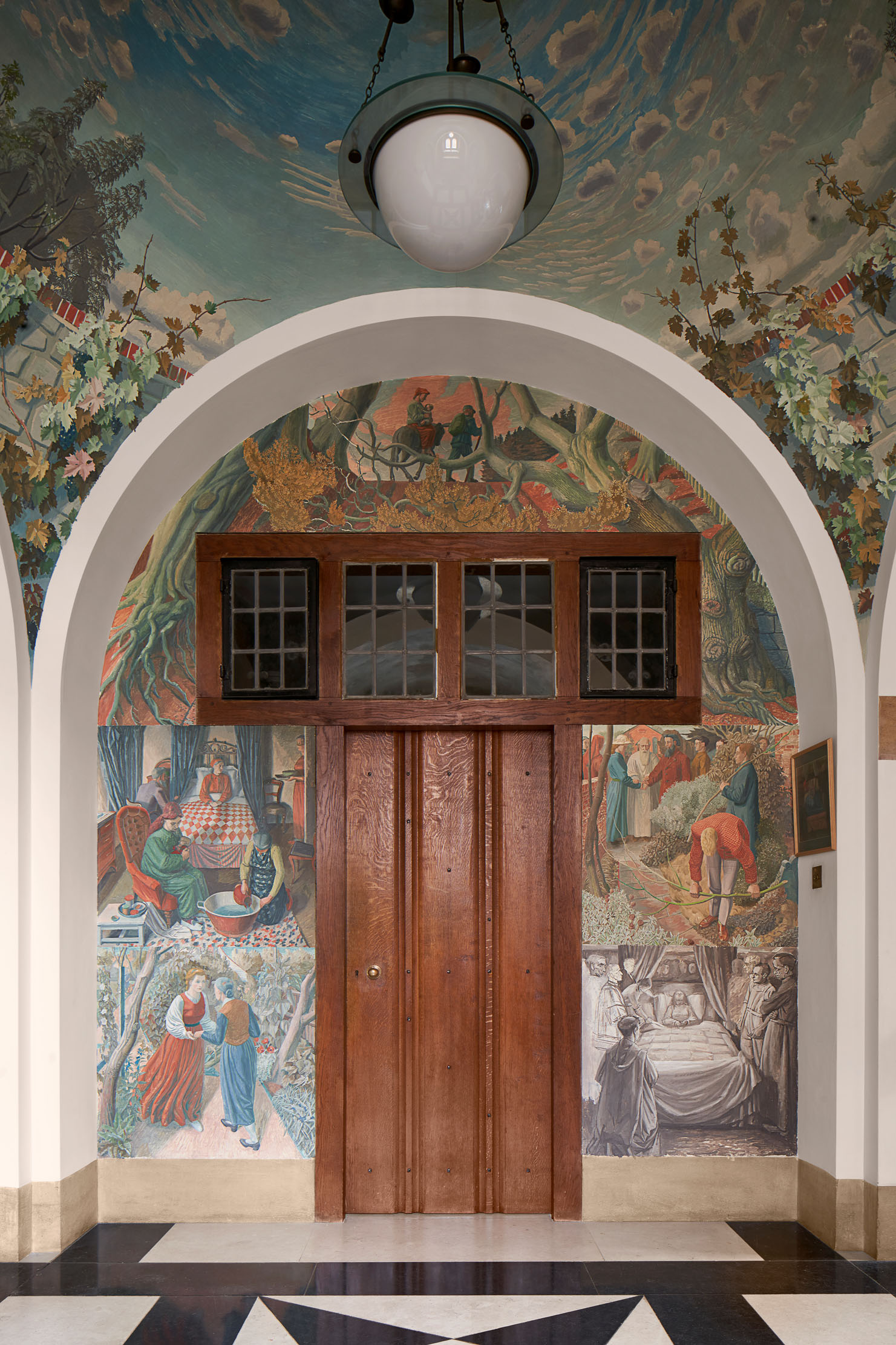
Some Christians disparaged D’Arcy’s pursuit of beautiful objects, leading him to liken the objections to those of Judas criticising Mary Magdalene for pouring precious ointment over the feet of Christ. One justification for his activities, D’Arcy wrote, was that ‘the Jesuits have been so often denigrated — at times quite unfairly, for their lack of taste, more barbari even than Barberini. Campion Hall would prove that this bad taste is not so common as believed in the works of the Society of Jesus’. And, after all, wasn’t a collection of works of art appropriate in Oxford, a city regarded around the world ‘as a paragon of culture’?
As the focus of life at Campion Hall, the chapel became a work of art in itself. Lutyens had created, on the first floor, a spatially simple space, Romanesque in character: a single cell covered by a barrel vault (Fig 1). Restraint added to the beauty. A central aisle paved in black and white (slate and Portland stone) leads to the altar, above which the baldacchino, made out of pine, looks like an arm of the one that Lutyens designed for the Catholic Cathedral in Liverpool. Reaching nearly to the top of the vault, itself 27ft high, it is powerful, but not overwhelming. Here, the Delhi order, which features on the doorcase to Campion Hall’s garden front, reappears.
Exquisite houses, the beauty of Nature, and how to get the most from your life, straight to your inbox.
Another reminiscence of the Viceroy’s House are the light fittings: disks of pale-blue glass suspended from cords, but with the added detail of a tassel, making them into cardinal’s hats (so high as to be out of reach). Joke or not, the delicacy of the fittings adds charm to the otherwise plain interior. There is only one colour accent, apart from the painting of the risen Christ and Mary Magdalen that now hangs behind the altar: the wave-like beam at the end of oak pews, painted in what Arthur Oswald, describing Campion Hall in COUNTRY LIFE on June 27, 1936, called sealing-wax red. Asked about the colour, Lutyens said it should be like his blood. It was a witticism too far: he wrote to apologise the next day. In the panelling to the side are set Frank Brangwyn’s lithographs of the Stations of the Cross (Fig 4), printed onto thin sheets of wood; they were presented by the artist.
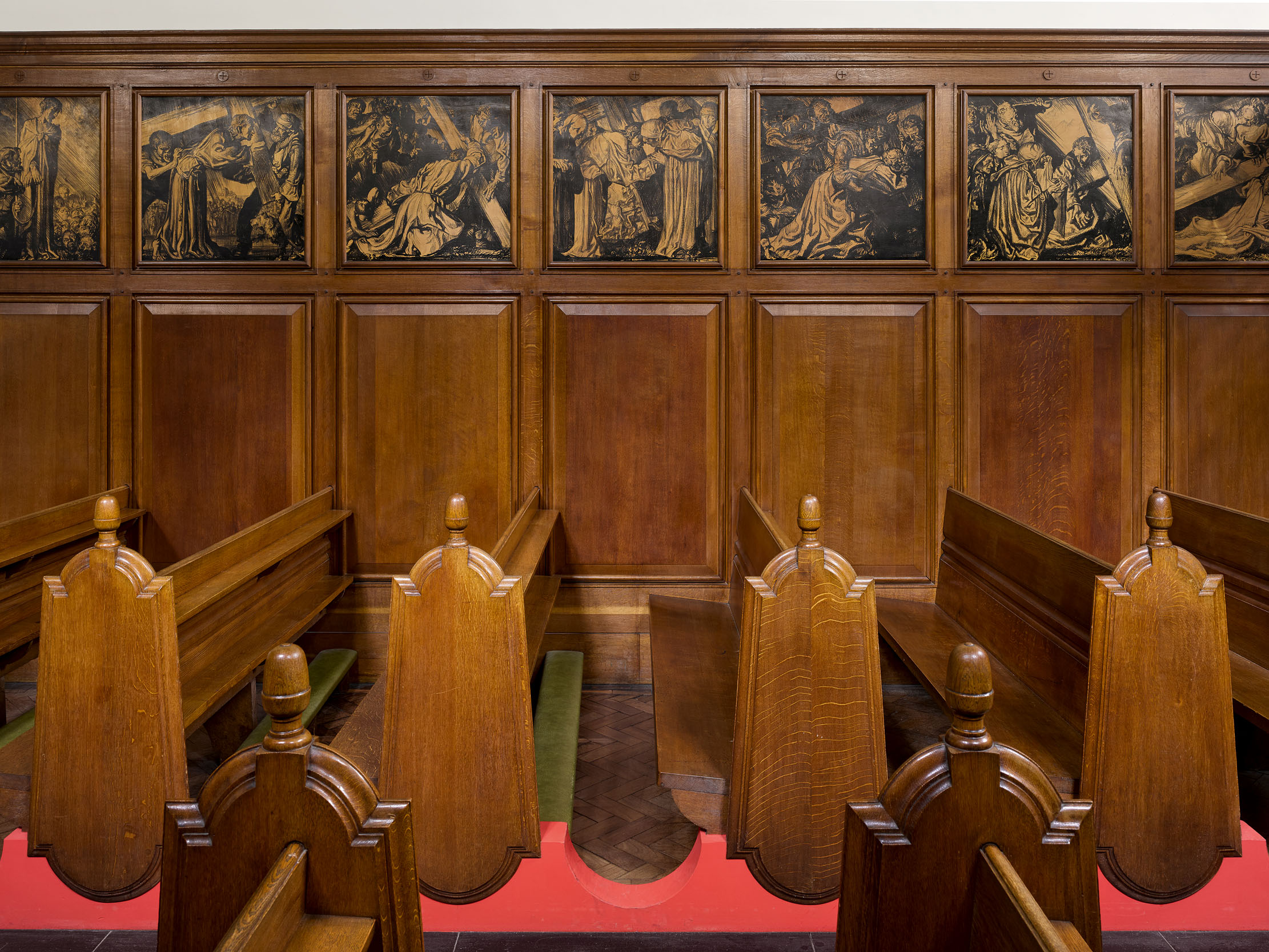
Small in scale, the altars in the ante chapel (Fig 7) and the intimate private chapel, from which internal windows provide a view into the body of the chapel, are monumental in their starkness and geometry. Yet another chapel is reached through an arch at the east end of the main chapel: the Lady Chapel (Fig 5). Suddenly, the visitor is transported into a world of spring flowers and tender, homely observation, for the walls have been almost entirely covered in murals by Charles Mahoney (Fig 2). They were commissioned in 1941, using royalties from Evelyn Waugh’s Edmund Campion: Jesuit and Martyr, written as a thank-offering to D’Arcy, who had been responsible for his conversion. The royalties amounted to £600 and Mahoney’s estimate for the work was £560.
The original idea had been to commission Stanley Spencer, who had completed his paintings for the Sandham Memorial Chapel at Burghclere in 1932. Declaring that ‘in my painting I owe nothing to God and everything to the Devil’, Spencer proved too much for the fathers and it was clear he would not be prepared to live at Campion Hall for the duration of the project. The Catalonian painter Josep Maria Sert told Lutyens that he would paint the apse if Lutyens gave him the job of artist at Liverpool Cathedral; Lutyens could not promise to, so the deal was off. Happening to meet Sir John Rothenstein, director of Tate Gallery, D’Arcy asked his advice. He recommended Mahoney and described his work, remarkable for its minute observation of Nature. D’Arcy responded: ‘Done.’
Born in 1903, Mahoney had won scholarships first to the Beckenham School of Art and then to the Royal College of Art, where he would later teach in the painting school. In a tribute published after Mahoney’s death in 1968, Rothenstein described his vision as ‘lucid and minutely observant of details which enabled him to portrait in black and white beds of plants, stems, leaves, blossoms, as well as trees more convincingly than could most other artists with the aid of colour… For preference his vision focused itself not only on the near but the commonplace, the familiar even when it was ugly. Rusted roofs of corrugated iron, brick walls, wheelbarrows and allotments figure frequently in his landscapes’. When, following the success of Rex Whistler’s murals for the Tate Gallery, Sir Joseph Duveen looked around for another project and landed on Morley College, SE1 as a suitable site, Mahoney — not yet 27 — was chosen as one of three artists to contribute, the others being Edward Bawden and Eric Ravilious. Working in oil paint mixed with wax on canvas that had been attached to the wall, he took the Pleasures of Life as his theme, in which figures representing seven Muses were supplemented by scenes of country dances, outdoor pastimes and apple picking. Alas, Morley College was bombed during the Second World War, leaving Campion Hall as his only large-scale commission to survive.
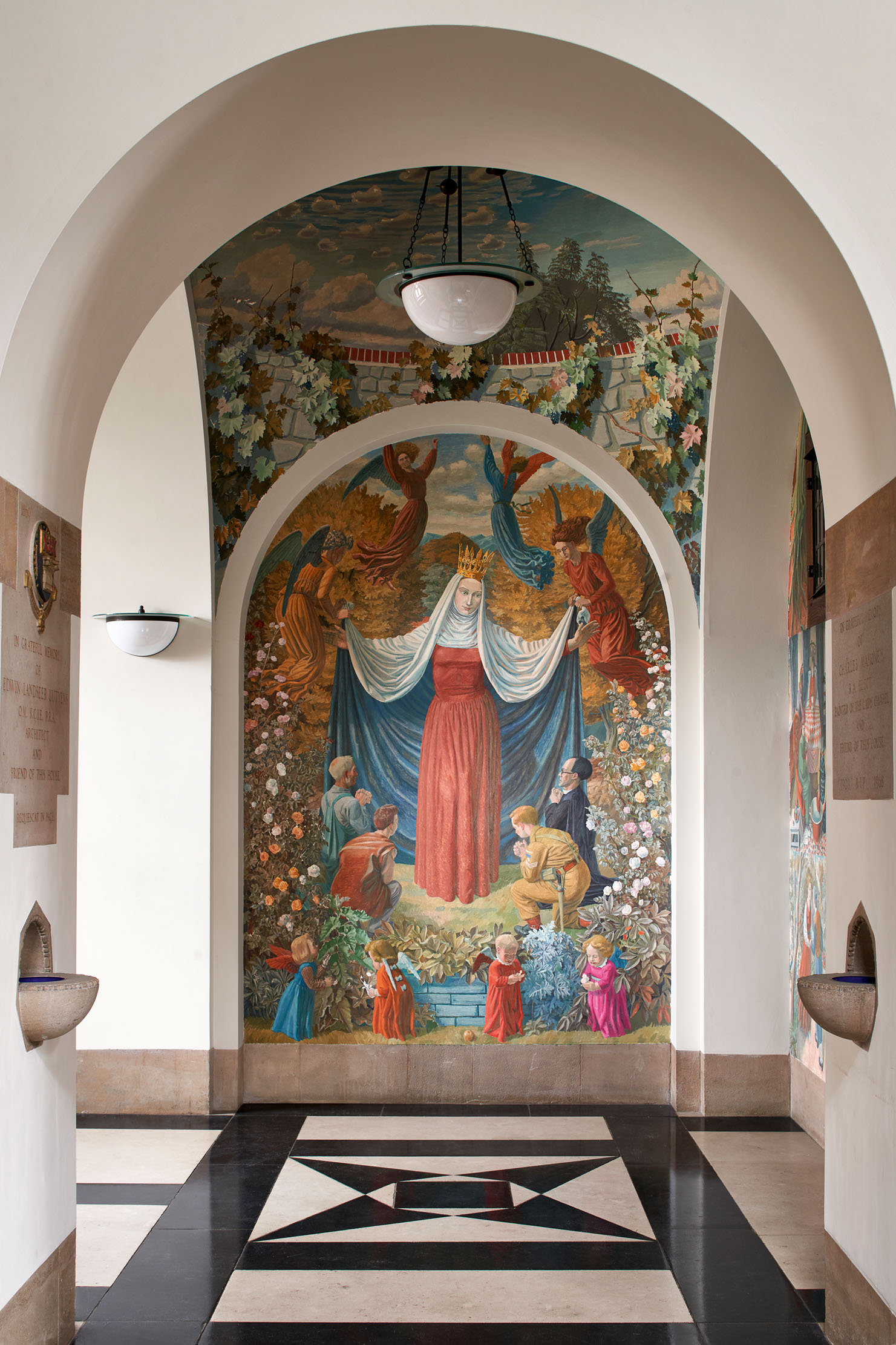
As did Spencer, Mahoney suffused the life he observed around him with the radiance of the Divine. His gentle style, delicate colours and delight in flowers were particularly suited to the Lady Chapel, the theme of which is the life of the Virgin Mary. Shepherds were modelled from the locals around Ambleside in the Lake District, to which the Royal College had been evacuated during the war (Fig 6).
The little girl in the Crowning of Our Lady is Mahoney’s daughter and the cherubs are village children: D’Arcy’s friend and Campion graduate, Father Vincent Bywater, remembered that a ‘little girl visitor was thrilled to find out how the angels got their nighties over their wings’. Although not a portrait painter, we have Bywater’s word for his ability not only to catch ‘a person’s features but his characteristic expression and especially his bodily stance. The portraits of Arnold and Tom Corbishley full length, on the west wall are perfect’. The image of bursar Father Stanislaus Jones SJ, who not only became a great friend, but went to him for painting lessons after his retirement, ‘is particularly faithful’.

Mahoney was not a Catholic, perhaps not even a Christian, so much as an ‘agnostic socialist,’ according to D’Arcy. But on dull days — he would only paint in natural light, which limited his productivity to the summer months — he would go on walks with people in the hall and quiz them about Biblical story-telling conventions. Was Joseph an old man? Were angels necessarily male? Would the shepherds have brought a lamb?
Sadly, when Mahoney presented his bill in 1953, the then bursar Father Corbishley found the £4,000 he was asking ‘a very unpleasant and distressing surprise’. Relations were broken off. By the time they were restored in the 1960s, Mahoney’s breathing trouble made work difficult and a few scenes were only sketched in black and white.
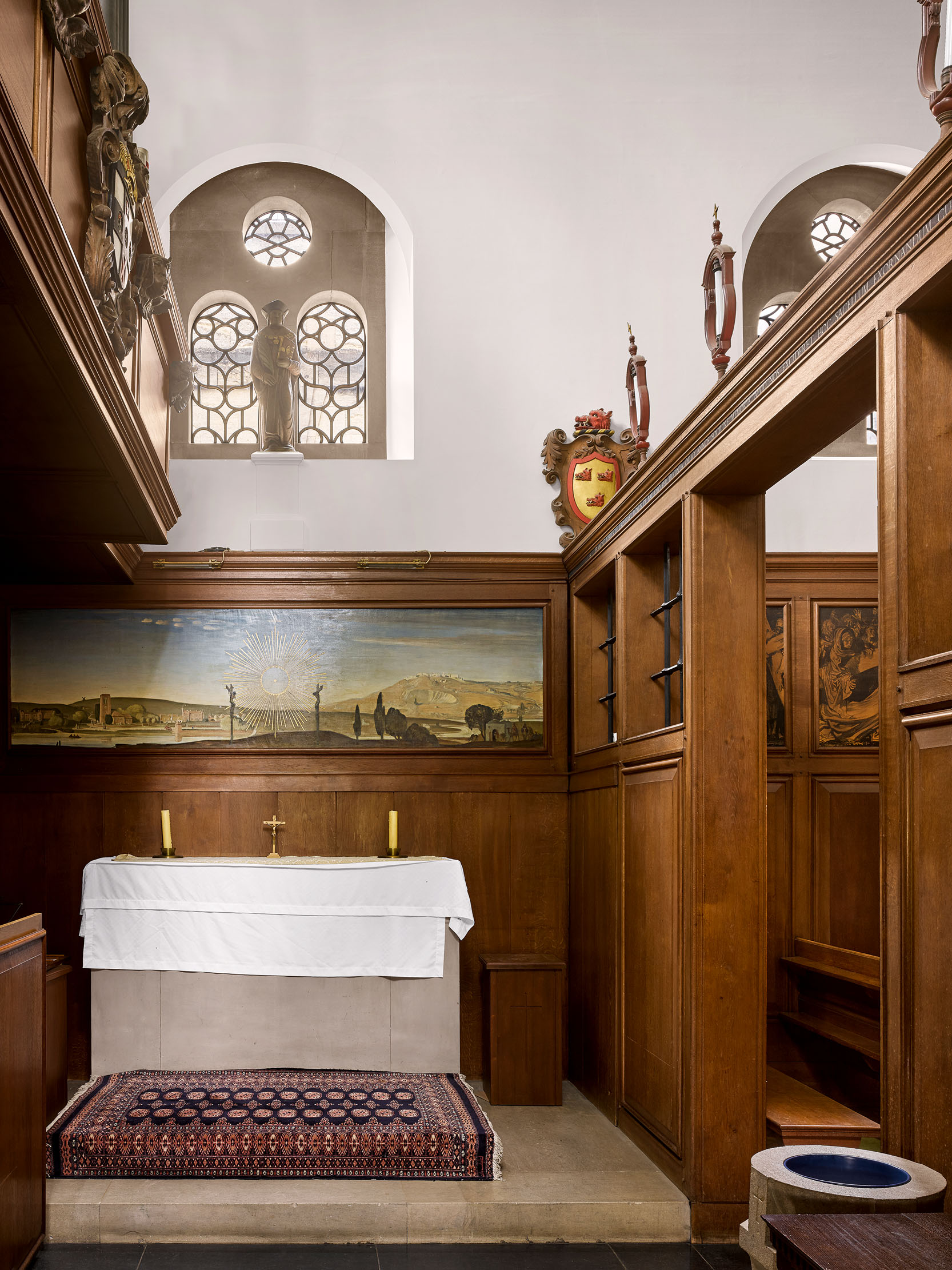
One of these, the Dormition (Fig 3), shows several of the individuals involved in the foundation of Campion Hall, including Lutyens, clustered around the bed on which the Virgin lies. It is an unexpectedly personal and touching memorial to their labours in the chapel, which undoubtedly is, as Father D’Arcy would have wished, one of the wonders of Oxford.
